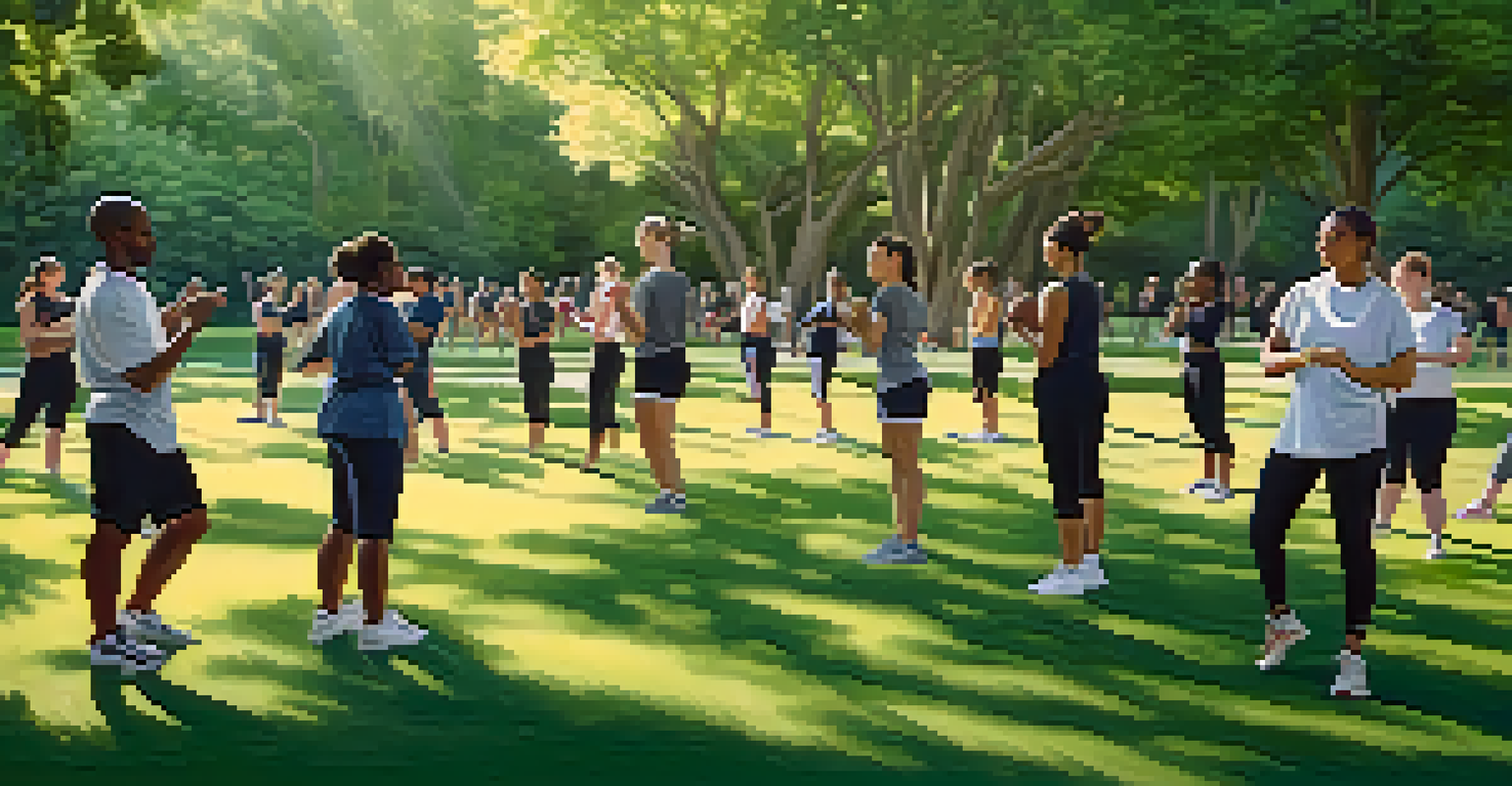Intersectionality of Race and Gender in Self Defense

Understanding Intersectionality in Context
Intersectionality is a concept that examines how various social identities—like race and gender—overlap and interact. It was coined by Kimberlé Crenshaw to highlight how individuals with multiple marginalized identities experience unique challenges. For instance, a Black woman may face different societal expectations and risks than a white woman or a Black man, highlighting the importance of context in discussions about self-defense.
Intersectionality is not just a lens; it's a way to understand the complexities of people's lives and the systems that shape their experiences.
When it comes to self-defense, understanding intersectionality helps to clarify why certain groups may feel more vulnerable. For example, women of color often report higher rates of violence and harassment, making self-defense not just a personal issue but a communal one. This context allows us to see how systemic factors influence the need for self-defense training and awareness.
Recognizing these intersections is crucial for developing effective self-defense strategies. It encourages a more inclusive approach that acknowledges the diverse experiences of individuals, ultimately leading to more tailored and effective solutions.
The Role of Race in Self-Defense Perceptions
Race significantly impacts how individuals are perceived and treated in self-defense scenarios. For example, studies show that people of color often face skepticism regarding their claims of self-defense, which can lead to harsher legal consequences. This perception can discourage individuals from reporting incidents or seeking help, fearing that they will not be believed.

Moreover, the media often portrays self-defense incidents involving people of color in a negative light, reinforcing stereotypes. This portrayal can affect public opinion and even influence jury decisions in legal cases. Understanding the racial dynamics at play is crucial for advocating for fair treatment and justice for all individuals.
Intersectionality Shapes Self-Defense
Understanding how race and gender overlap is crucial for addressing the unique challenges faced by marginalized individuals in self-defense situations.
By addressing these biases, we can work towards a more equitable understanding of self-defense. This means advocating for policies and practices that recognize the unique challenges faced by people of color and ensuring that their voices are heard in discussions surrounding self-defense.
Gender Dynamics in Self-Defense Training
Gender plays a significant role in the perception and execution of self-defense training. Traditional self-defense classes often cater to a male-centric audience, focusing on physical strength rather than technique and strategy, which can alienate women. This gap highlights the need for self-defense programs that are inclusive and tailored to diverse gender identities.
Self-defense is not just a physical act; it is an assertion of one's right to exist and navigate the world safely.
Women, in particular, may face unique challenges that require different approaches to self-defense. For instance, they may need to focus on de-escalation techniques and awareness of their surroundings rather than solely physical confrontation. This shift not only empowers women but also fosters a sense of community and support among participants.
Creating self-defense programs that consider gender dynamics can enhance their effectiveness. By incorporating elements that resonate with diverse experiences, these programs can empower individuals to take control of their safety in ways that suit their needs.
Cultural Considerations in Self-Defense Practices
Cultural background can greatly influence one’s approach to self-defense. Different communities may have varying beliefs about violence, safety, and the appropriateness of self-defense tactics. For instance, in some cultures, seeking help from community members might be preferred over physical confrontation.
Understanding these cultural nuances is essential for creating effective self-defense programs. It allows instructors to build trust and rapport with participants, ensuring that the training resonates with their lived experiences. Tailoring self-defense strategies to fit cultural contexts can make them more accessible and applicable.
Cultural Context Influences Safety
Cultural beliefs about violence and safety significantly impact how self-defense practices are perceived and implemented across different communities.
Moreover, incorporating cultural perspectives into self-defense practices can promote inclusivity. This not only enriches the training experience but also fosters greater awareness and understanding among participants, creating a supportive environment.
Legal Implications of Self-Defense Across Identities
The legal landscape surrounding self-defense is often fraught with complexities, especially when race and gender intersect. Laws vary widely by jurisdiction, and individuals from marginalized groups may not receive the same legal protections as others. This discrepancy can lead to a chilling effect, where individuals hesitate to defend themselves due to fear of legal repercussions.
For example, stand-your-ground laws have been applied unevenly, with individuals of color facing harsher outcomes in self-defense cases. Understanding these legal nuances is essential for advocates and individuals alike, as it highlights the importance of legal literacy in self-defense situations.
Addressing these legal challenges requires systemic change and advocacy for fair treatment. By raising awareness of these disparities, we can work towards a justice system that recognizes and protects the rights of all individuals, regardless of race or gender.
Empowerment Through Self-Defense Education
Self-defense education serves as a powerful tool for empowerment, particularly for marginalized individuals. By equipping people with the skills and confidence to protect themselves, these programs foster a sense of agency and resilience. This empowerment is especially vital for women and individuals of color, who may face heightened risks in their daily lives.
Moreover, self-defense education often extends beyond physical techniques, incorporating discussions about mental preparedness and situational awareness. These elements are crucial for developing a holistic understanding of personal safety, allowing individuals to navigate their environments more effectively.
Empowerment Through Training
Self-defense education empowers marginalized individuals by equipping them with skills and confidence, fostering a sense of agency and community support.
Through empowerment, self-defense education contributes to community building. As individuals learn together, they share experiences and support one another, creating a network of safety and solidarity that extends beyond the classroom.
Future Directions in Self-Defense Education and Advocacy
Looking ahead, the intersectionality of race and gender in self-defense calls for ongoing advocacy and education. As awareness grows, it's crucial to develop programs that address the unique experiences of individuals from diverse backgrounds. This means creating inclusive curricula that reflect the realities of those who are often marginalized.
Additionally, fostering collaboration between community organizations, legal experts, and self-defense instructors can enhance the effectiveness of these programs. By pooling resources and knowledge, we can create a more comprehensive approach to self-defense that addresses systemic issues while empowering individuals.

Ultimately, the goal is to create a culture of safety and support that transcends individual experiences. By prioritizing intersectionality in self-defense discussions, we can work towards a future where everyone feels empowered to protect themselves and advocate for their rights.